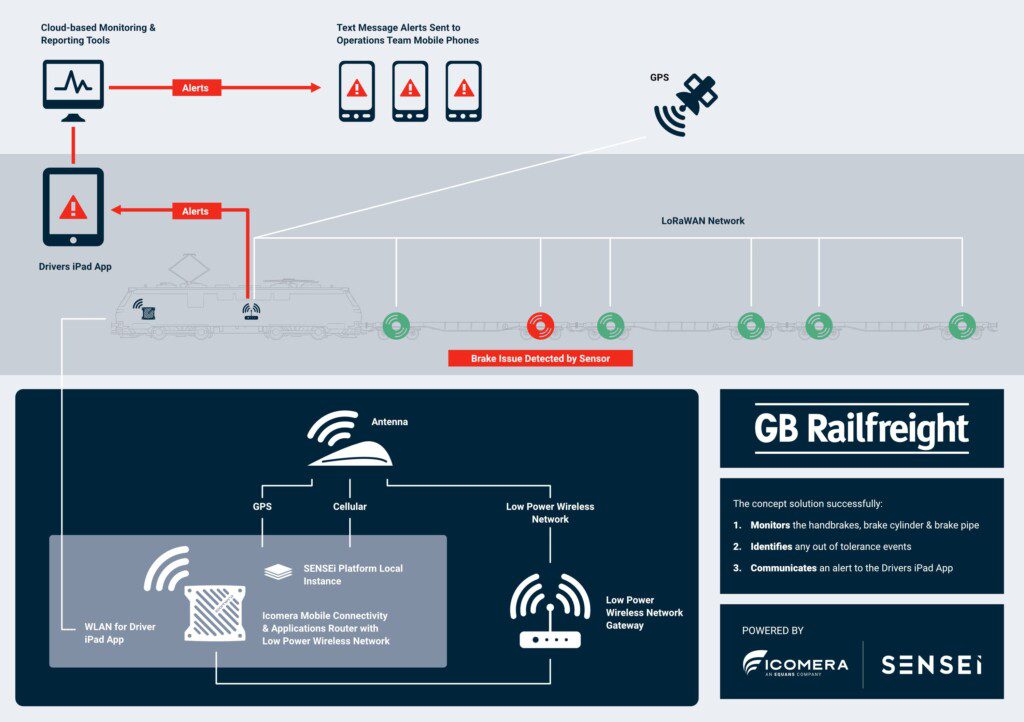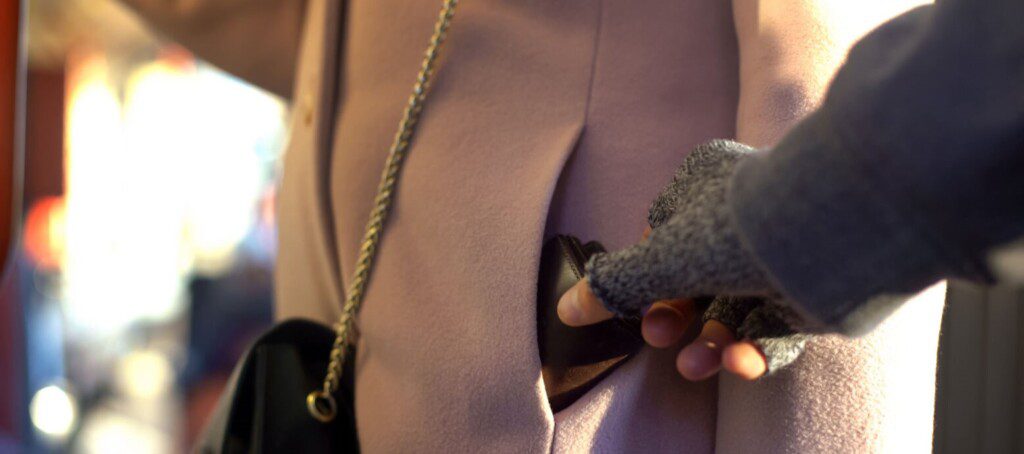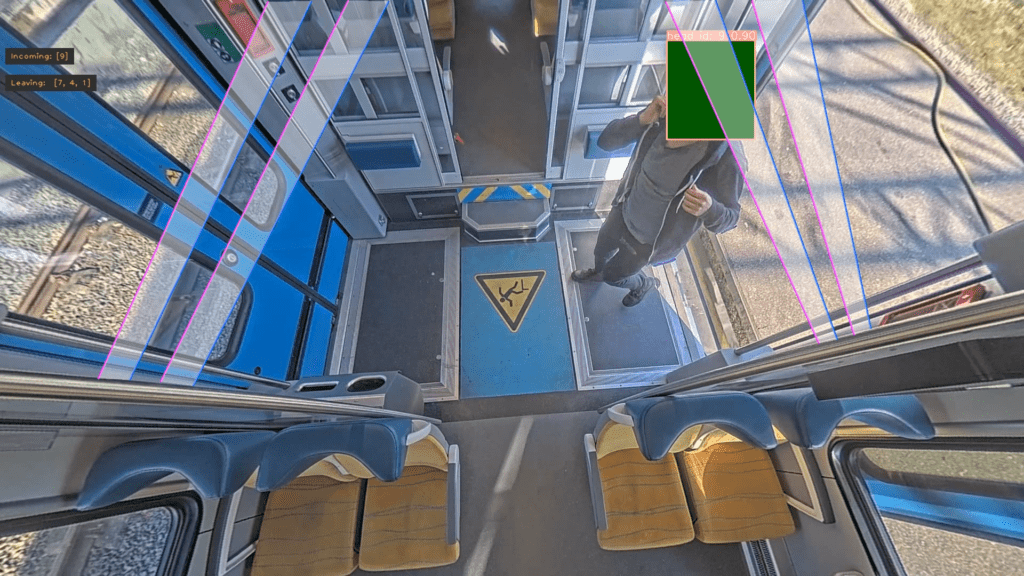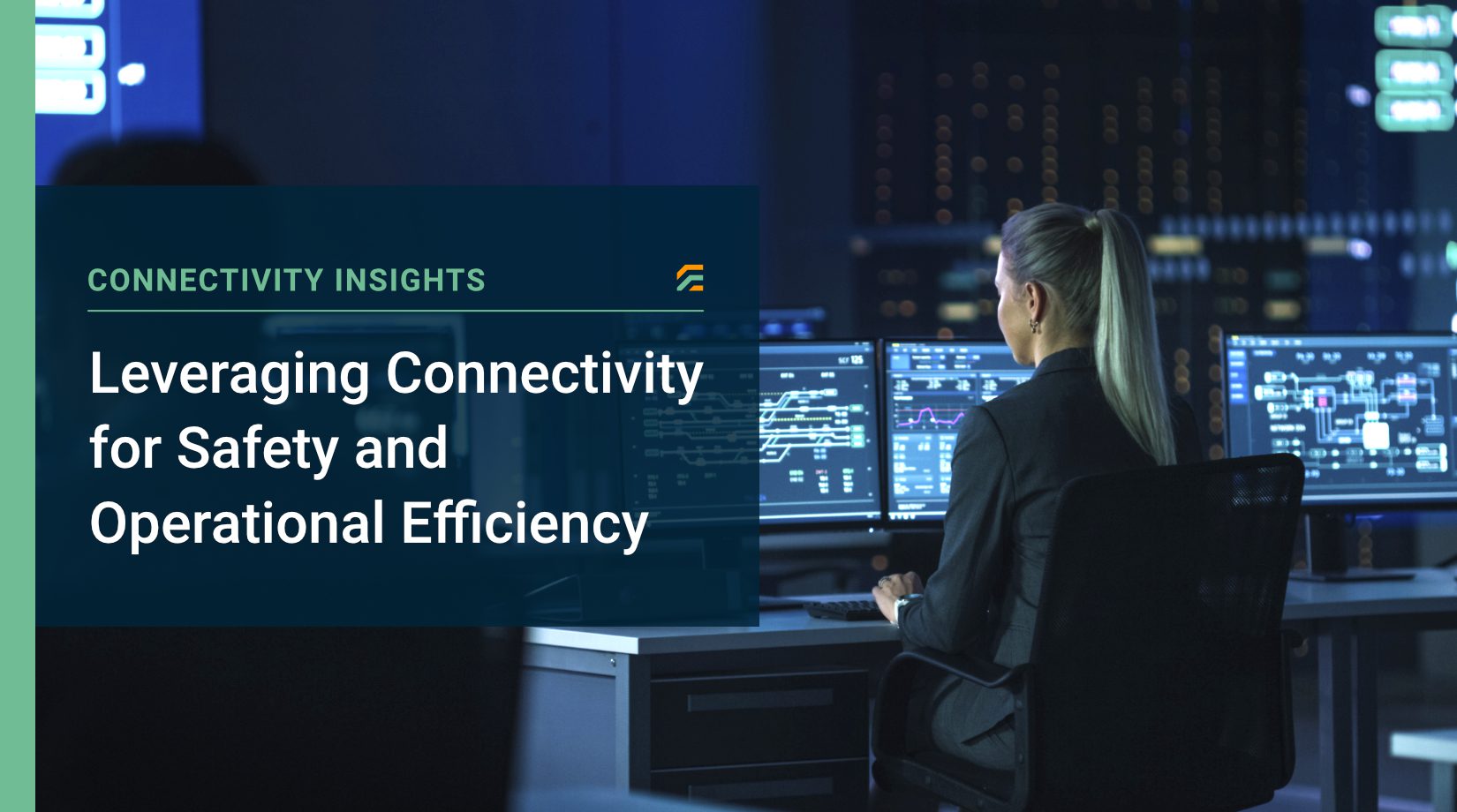Modern trains have come a long way since their early analogue counterparts. Steam engines and brass whistles have given way to electrification and, now, to the digitalisation of onboard systems and services.
As Rail transport operators embark on this dramatic transformation from slow, roving coal furnaces to what could be described as ‘high-speed mobile data centres’, new opportunities for innovation are emerging as a means of meeting passengers’ expectations of reliable, and timely services in an age of ever-increasing immediacy, as well as safer and more secure travelling environments.
Proper Analysis Prevents Service Paralysis
Safety has always been the priority for transport operators and infrastructure providers, however when accidents do occur, they cause major service disruptions. For example, there are on average, 500 freight rail derailments occurring in Europe each year[1] and approximately 10% of these are due to issues relating to the wheels of the wagon not turning freely[2]. This can be caused by axle or brake issues due to mechanical failure, or human error – failing to release the handbrake for instance.
The UK’s Petteril Bridge Junction derailment, which saw the closure of major rail routes for seven weeks[3] serves as a prime example of service disruption due to wheel failure. The cost of the associated network disruption of such events, not to mention the cost of wagon and infrastructure repairs is substantial.
CASE STUDY: GB Railfreight IoT Brake Monitoring
To demonstrate the effectiveness of remote sensor-based component monitoring and alert systems, Icomera’s dedicated design and engineering division, DG8, collaborated with SENSEi Networks to test a first-of-a-kind solution for wheel and brake issues for freight rail operator GB Railfreight (GBRf).
Cutting-Edge IoT, Adapted for Freight Rail
The GBRf monitoring system used a combination of new, emerging technologies, and hardware used in other industries, refactored for rail freight, with a view to:
- Monitoring the train’s braking system using battery-powered sensors.
- Identifying out-of-tolerance events using SENSEi’s IoT Platform-as-a-Service, hosted as a virtual machine on Icomera’s onboard mobile Internet connectivity and applications router.
- Communicating alerts to the driver over the vehicle’s wireless network via an app running on a smart device in the cabin, allowing the driver to take action and receive feedback on the results of that action in real-time.
- Sending status and alert data to a cloud hosted server, via the Icomera router which aggregates the connectivity of the available cellular networks along the route, feeding into reports for teams back at the operational control centre.
The GBRf monitoring system, which combined a wealth of data with in-person vehicle health-checks, provided an excellent proof of concept for how interlinked digital systems can be used to connect drivers and engineering teams to real-time, train borne sensor data – a natural step towards a safer and more efficient rail network for all users.

Healthy Trains Need Healthy Tracks
Vehicular issues are not the only cause of service disruptions and train derailments. Environmental issues such as flooding and falling vegetation are major contributors to accidents, as well as the fact that the frequent usage of track infrastructure makes it prone to extensive wear and tear.
This is especially true for switches and crossings (S&Cs), which play an integral role in the life of the railway, by guiding trains from one track to another. Their propensity for higher wear and tear (and causing several low-speed derailments per year) means that S&Cs require more frequent inspection and replacement than most other rail engineering assets.

Track infrastructure managers spend hundreds of thousands of hours and considerable financial expenditure on maintenance efforts and, when conducted during the daytime, track inspections may cause disruptions to passenger and freight services.
In addition to operational and fiscal concerns, track inspections also present significant safety issues for engineering staff as they are more often conducted manually, at night, with poor visibility, increasing the potential for serious accidents.
Case Study: Network Rail Visual Inspection Unit Conversion Project
The UK’s rail infrastructure provider, Network Rail, has over 20,000 miles of track to inspect and maintain on a weekly basis, which sees costs mount up quickly, alongside persistent logistical and safety issues, particularly where inspections of S&Cs are concerned.
Network Rail therefore sought a proof-of-concept demonstrating a safer, yet operationally viable alternative to on-foot visual inspections to relieve these pressures, which it could commence testing within a year.
Through DG8, and working collaboratively with other industry-leading solution providers, Icomera was able to answer this need and deliver a turnkey solution for Network Rail by converting two retired British Rail Class 153 “Sprinters” into cutting-edge Visual Inspection Units (VIUs) outfitted with optical sensors.

A line scan camera installed on the underside of the VIU.
Integrating Complex Digital Onboard Solutions and Innovating for Safer Railways
To meet Network Rail’s goals, the unit conversion of the Class 153s involved integrating the following elements:
- A track condition and geometry monitoring system enabling non-contact measurement of railroad track.
- A camera system recording images of the track.
- A positioning system that accurately tags the data from the other systems with the location on the network.
- Train to ground connectivity. Since the VIUs essential systems are permanently powered, they can constantly transmit data, including video footage, back to The Cloud; this allows Network Rail to access the systems 24/7. Should the train be operating in bad reception areas or working in tunnels, the kit is able to transmit the data after the shift has finished. Even after the driver has gone home, the train remains powered and transmits.
The VIU conversion units were each equipped with eleven cameras (eight at the front of the train, one underneath, and two at the back) which could record thousands of high-resolution images, even as the train moves at high speed. In fact, the image resolution captured by the system was even high enough to allow for the inspection of individual bolts. By the end of the project’s implementation, Network Rail was able to remotely monitor the condition of railway infrastructure through ‘virtual track-walks’, reducing the need for personnel to physically attend on-site and lowering the risks to their safety, all while working to prevent service disruptions due to track related accidents.
The project won ‘Safety Achievement of the Year’ at the National Rail Awards, demonstrating the power of leveraging connected technologies to ensure both safety and operational efficiency through preventative means.
Easing Worries to Get Passengers Onboard
Despite their potential severity, derailments themselves are comparatively rare. Public transport is in fact the safest means of moving people across distances – ten times safer than travelling by car[4]. Therefore, passengers’ concerns about their safety on board the train are arguably more focused on the objects and people within their personal space, for example the conduct of the people they are surrounded by, or the security of their luggage. After all, using public transport requires passengers to share confined spaces with total strangers, for predetermined lengths of time, with limited opportunities to remove themselves from uncomfortable situations.
This aspect of travel is clearly front-of-mind where passengers are concerned, especially given the media’s tendency to fuel fears of danger on public transport[5]. Hitachi Rail’s 2024 ‘Better Connected’ report on a global consumer research study of over 12,000 people showed that “crowding remains the single biggest barrier to people using public transport”[6] and that onboard safety is a major deciding factor in using public transport for 89% of passengers[7].
The findings align neatly with an MTA survey of New York passengers that found 72% of respondents are “very concerned” about crime and harassment and 87% of lapsed riders consider safety the biggest factor in returning to public transport[8].
A study conducted with UK operator LNER also suggests that younger passengers whose formative years were overshadowed by pandemic lockdowns may experience a heightened level of anxiety and discomfort when using public transport[9], suggesting that the best way to entice the next generation of public transport users is to focus on providing a safe, relaxing journey.
Beyond attracting passengers, safeguarding staff is another vital consideration. Recent studies have shown that 94.1% of UK front line rail staff have faced abuse at work[10] and over 72% experienced workplace violence in the last year[11].

Building Confidence in Safety
It is clear that transport operators are listening to their customers and staff and are placing safety and security at the forefront of their decision-making. In the UK, a multi-year research study has shown that cameras worn by staff as visible deterrents reduce the likelihood of assault by 47%[12]. 7,000 new cameras were installed on board Northern’s fleet of trains in 2022, footage from which can be viewed by the British Transport Police in real time. The number of dangerous attacks on trains operated by Northern is down almost 90% in the last 12 months, with the number of recorded incidents at just 8[13].
The U.S. treats safety and security just as seriously. For example, Washington Metropolitan Area Transit Authority (WMATA) increased security patrols by 70% through partnerships with local policing agencies, with crime enforcement up by 300%[14]. By combining these patrols with 30,000 cameras on buses, trains, and stations, WMATA has seen a 14% decrease in crime and a 24% and 15% increase in rail and bus ridership, respectively[15].
Physical and Virtual Patrols: A Combined Approach
The ability to view, record, and track through real-time video feeds from any number of connected cameras at the click of a button allows security and law enforcement personnel to perform ‘virtual patrols’. Much like the ‘virtual track-walks’ mentioned earlier, this can reduce the risks to staff and passengers, as incidents can be monitored proactively and de-escalated before situations have a chance to cause anxiety, damage, or harm.
Virtual patrols by no means reduce the necessity for the physical presence of front-line and security staff. In fact, by combining physical and virtual approaches, operators provide a significant deterrent to unwanted behaviour while making the jobs of transport personnel easier and safer by far.
Real-Time Monitoring: Prevention is the Best Medicine
If a preventative approach is vital in protecting assets from damage, the same may be said for the protection of the people on the trains themselves.
Passengers and staff in danger of personal harm or theft find little comfort in knowing that video footage is recorded for later use in court, if nobody can proactively intervene to prevent the risk in the first place. This is why the ‘real-time’ aspect of video surveillance is so important.
To truly transform onboard surveillance systems into ‘real-time’ preventative measures, the train’s onboard network needs to have the capability to effortlessly process all video data on the edge and offload it from trains just as quickly when footage is requested remotely.
This process is not as costly or data intensive as one might think. Remote data offload is cheaper and faster than physically removing storage media, as is the ability to perform camera device health checks directly from the surveillance VMS dashboard, as opposed to only checking them in person. Additional savings are achieved by automatically offloading data over Wi-Fi, either all at once when trains are not in service, or incrementally as they pass through station Wi-Fi networks.
It should be noted that the collection of forensic evidence is still a vital component of any video surveillance system, and the best modern digital video surveillance solutions still need to use high-definition optical sensors and secure, high-capacity onboard data storage systems to ensure that video footage is always fit for the purpose of forensic analysis.

Video Data and AI Analytics: Dual Functions United by Purpose
The technology used to monitor the devices and people on the train can also perform additional operational and safety functions, which would normally have necessitated the use of disparate systems and devices.
For example, networked digital video surveillance cameras can use advanced AI video analytics to function as Automatic Passenger Counting (APC) systems which can exceed traditional sensor-based solutions in both function and accuracy, while reducing the time and costs needed to install and maintain separate pieces of hardware.
This approach offers a huge cost-saving opportunity for transport operators, who need to understand passenger loads and travel patterns, so they can ensure compliance with safety measures and manage fleet and staff capacity planning.
Transport operators can reliably monitor total occupancy levels from consist- down to coach level, boarding/alighting numbers per station, and total vehicle ingress/egress, all in real-time.
Sharing the ability to effectively gauge train occupancy levels with passengers can also make it easier for them to choose less noisy or crowded environments to travel in, ensuring that they are comfortable throughout their journey.
A Truly Connected Future
By embracing connectivity and intelligently linking onboard devices and systems together in a digital ecosystem, the data collected can be analysed and used for a wide range of applications such as train condition monitoring, track monitoring, onboard video surveillance and automated passenger counting.
With high-powered, reliable connectivity enabling forward-looking strategies, operators can provide a Connected Journey that is smoother, safer, and more enjoyable than ever before.
This article features in Icomera’s 48-page industry report “Connectivity Insights 2024”.
Read the full report below or via this link to find out more about the expanding role of connectivity in supporting the rail industry’s goals, and the adoption of new technologies and innovations…
References:
[1] Office of Rail and Road, Rail Safety Data Portal: https://dataportal.orr.gov.uk/statistics/health-and-safety/rail-safety/
[2] D-Rail Consortium, ‘Report on Derailment Economic Impact Assessment’, 29 November 2012
[3] Rail UK, ‘RAIB Report: Freight train derailment at Petteril Bridge Junction’, 10 October 2023: https://railuk.com/rail-freight/raib-report-freight-train-derailment-at-petteril-bridge-junction/
[4] APTA, ‘The Hidden Traffic Safety Solution: Public Transportation’, 2016
[5]Streetsblog Cal ‘It’s Safe to Ride Transit’, 23 August 2023:https://cal.streetsblog.org/2023/08/23/its-safe-to-ride-transit
[6] Hitachi Rail, ‘Better Connected: Global Attitudes to Integrated Public Transport’, 2024, p.3 Accessed via https://www.hitachirail.com/english-better-connected-global-attitudes-to-public-transport/
[7] Ibid. at p.7
[8] CBS Broadcasting Inc. ‘MTA Survey Finds 87% Of Lapsed Subway Riders Say Safety Is Biggest Factor In Return To Mass Transit’, April 13, 2021: https://www.cbsnews.com/newyork/news/mta-subway-safety-survey-more-police/
[9] Startup Sherpas, LNER, ‘Young People – The Champions of Rail: 1,000 Ideas to Futureproof the Rail Industry’, 2024: https://startupsherpas.org/future-of-rail
[10] RSSB, ‘Work-Related Violence and Trauma’: https://www.rssb.co.uk/en/safety-and-health/leading-health-and-safety-on-britains-railway/work-related-violence-and-trauma
[11] RMT, ‘RMT Survey Reveals Violence Against Transport Workers’: https://web.archive.org/web/20240710015554/https://www.rmt.org.uk/news/rmt-survey-reveals-violence-against-transport-workers/
[12] Rail UK, ‘Industry announces positive findings of research project into staff safety and body worn cameras’, 12 January 2024: https://railuk.com/rail-news/industry-announces-positive-findings-of-research-project-into-staff-safety-and-body-worn-cameras/
[13] Rail Business Daily, ‘Dangerous attacks on region’s trains down almost 90 percent’, 5 December 2023: https://news.railbusinessdaily.com/dangerous-attacks-on-regions-trains-down-almost-90-percent/
[14] Metro Magazine, ‘Increased Patrols, Security Cameras Boost WMATA Safety Program’, 22 February 2024: https://www.metro-magazine.com/10216260/increased-patrols-security-cameras-boost-wmata-safety-program
[15] Id.

